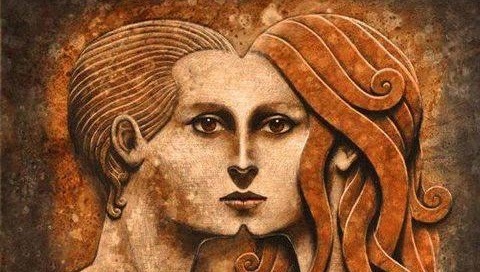To new leadership in the arts
The gender debate in the arts is often still based on a sharp contrast between men and women. The problem is said to be that too many men call the shots, and that their leadership perpetuates inequality.
The men at the top are the problem, and the women underneath are the solution. Will we ever solve this?
‘Management is like money: it has no gender,’ says Frances Hesselbein, former CEO of the American Girl Scouts and today a 100-year-old authority in leadership. Read: women at the top can be just as domineering and authoritarian as men. Indeed, many courses on female leadership still focus on this. They teach women to develop more masculine assertiveness and to cultivate extra grit to hold their own better in a masculine environment. They want women to conform, to defeat evil with the same evil. Even so, the sex of the boss is not what makes the difference, rather the approach to leadership and the structure of the organisation. That is what the gender debate in the arts should be about.
WATER AND FIRE IN BALANCE
This debate must therefore be based on holistic, rather than divisive, thinking. This thinking revolves around achieving more unity between male and female energy. These energies exist in all of us as two polarities of the same life-giving force. This means that men do not have exclusively male energy, and women do not have exclusively female energy. Similarly, to a greather or lesser extent, every organisation has access to both forces. Holistic thinking chooses a dynamic balance between the two.
Defining male and female energy as two polar halves borders on essentialist, but this idea does build on centuries of cultural experience. Male energy is the energy of fire. It manifests itself strongly down to the smallest detail, but can also be all-consuming if it is not tempered. Female energy is the nurturing, enveloping energy of water. It is the energy of intuition, introspection, reflection. Tribal societies teach us that male energy is directed outward and female energy inward. If the tribe is attacked, the male force grasps for the sword, the female force clutches the baby.
RADAR OR LASER?
Even if you are sceptical about looking at things in such bipolar terms, it does help give more clarity about the current problem in our organisational culture. It makes it possible to find balance between masculine and feminine aspects of leadership. The standard work The Female Advantage (1990) by Sally Helgesen gives examples of feminine advantages such as the skill to strengthen relationships, the aptitude to communicate directly, natural comfort with diversity, a process-oriented approach to negotiation, and the inclination to lead a team from the centre instead of top-down. Female leadership works on a broad spectrum, more like a listening radar than like a cutting laser. Female leadership has a more systematic than mechanical way of thinking, with strong attention for the broader relationships.
This does not mean that male leadership is inferior or wrong, or that we should glorify female leadership as the only right way. Each approach has its qualities and its excesses. It is primarily about using both energies together at their highest level of quality. The ideal leader is the herder who can move flexibly between the two poles depending on the situation. Sometimes they put themselves discreetly behind the group to keep everyone together and to protect them. Sometimes they stand in front of the group when danger threatens or a clear direction is needed.
An imbalance occurs when one force overpowers the other. If the masculine energy in a system is greater than the feminine, the two poles are pushed apart. Then the masculine energy continues to grow, while the feminine continues to contract. In a natural relationship, the feminine energy is nevertheless greater than the masculine: because she is directed inward, she encompasses the radiant masculine energy. This is the only way for both opposite forces to keep each other and the system in dynamic balance.
MASCULINE CULTURE
It is precisely this balance that has become completely distorted in the arts: the sector tends strongly toward the masculine pole. This is especially apparent in the supremacy of the artistic ego in the field of the arts. In our organisational culture, the natural urge of the artist – male or female – to manifest has an unassailable, almost sacred status. Especially in various organisations that are built up around successful international artists, if needed everything is sacrificed to his or her expansive desire to create and drive to prove themself to the outside world.
According to organisational theory, the feminine pole lies more in the ‘business and production framework’ of the artistic act. She is the nurturing energy of the arts organisation: she serves and facilitates the creative output and provides the connection with the world. In the arts, ‘the office’ is often only treated with implicit or explicit disdain. We have come up with the term ‘overhead’ for this, as if it was a ‘burden’. This framework is regarded as a limitation of the creative ego, as a necessary evil for achieving the artistic dream.
Artistic expansion is the norm. In the event that more money enters an organisation, this almost automatically goes to more productions and seldom to more care. ‘Everything for art’ has become a religion, with popes and all. In a healthy and sustainable system, there is a dynamic balance between these two poles. For example, perhaps no fourth production this year, to give the team a chance to catch their breath and regain balance. Or for once a prestigious offer for three performances in Asia is not accepted. Waxing and waning together. This seems to be difficult in the arts. Why is the sense that everyone is at the end of their tether now so strong? It is not only because of decreasing subsidies, but also imbalance. Everyone has to push for ‘higher, faster, better’: making an extra effort in the weekend, overtime as the norm, drawing ever deeper from their forces. Because that is what the artist, who everything revolves around, does. The sky is the limit, and the rest must follow.
TIME FOR TRANSITION
Of course, this masculine overdrive is not unique to the arts. It reflects the distortion of an entire social model that is based on growth and expansion. In the past centuries, we have ‘explored’ and given opportunities to every facet of this masculine side, which has also had great success in some areas. However, at the same time care for the greater (social, cultural, ecological) whole was reduced to a ‘soft skill’ that is usually felt as an obstacle to the ambition to grow. Today, we are coming up against the destructive consequences of this preponderantly masculine worldview. Our society celebrates the cult of individuality, is losing itself in a compulsive competitive drive and is in danger of going under due to a total lack of solidarity or care for the environment. Rational control and spreadsheet-based management prioritise the head over the gut.
A social countermovement has already manifested. Today, we are experiencing the rise of an awareness that has the characteristics of feminine energy: care for the whole, we-orientation, introspection. Look at new initiatives of the sharing economy, cohousing, ecological transition or connective citizens’ protest such as Hart boven Hard in Belgium. According to the economic philosopher Rogier De Langhe (UGent), this represents a fundamental shift from a vertical hierarchy to a horizontal network. ‘Digitisation has changed everything. The pyramid model is being replaced by the network model, which is much more agile, adapts faster, and is less susceptible to control. You see this not only in social media, but also in car sharing or energy cooperatives: they function much more horizontally, in a wider web. We come from a world that is controlled by the market and state. With the digital revolution, we are moving to a world in which anyone can develop power.’
SHARED POWER, DOUBLE POWER
Is the arts world lagging behind this shift? Although new and more collective organisational models are developing among a younger generation of artists, most artistic structures still look quite stiff in comparison with experiments in other sectors. This puts the arts into tricky territory. The complexity and rapid changes in our society will make it increasingly difficult for traditional masculine leadership to respond to the outside world quickly and adequately. Rigid structures with centralised knowledge and power are far too limiting for this. They are built on the principles of classic ‘2D or spreadsheet-based management’.
No one should underestimate the visible changes in focus. We are at the beginning of a paradigm shift in our view of power structures. We have to evolve to systems in which not the strongest but the wisest forces take the lead. This wisdom is characterised by the breadth and depth of vision, the degree of awareness and the relativity of the ego. It even looks like we are evolving to organisations without a directive leader at the top. For instance, Kunsthal Extra City in Antwerp is studying the possibility of a decentralised organisational model in which every employee has final responsibility for his or her specific area, while the organisation is directed by mutual advice and a number of basic rules in case of conflict. This model is based on maximum autonomy of the parts: a shift from a power hierarchy to a natural hierarchy. In a self-directed structure with shared leadership (and therefore much greater engagement of each employee) the ability of leaders to coach and inspire is much more important than their ability to keep business under control.
BACK TO THE ROOTS
How could this look in practice? A good example is Buurtzorg, or ‘Neighbourhood Care’, in the Netherlands. Established as a foundation in 2006, the home care organisation already employed 8,000 people by 2014: half of all community care workers in the Netherlands. The annual turnover was then already 260 million euros. This success is based on the philosophy that the direct relationship between the care provider and patient back on centre stage, instead of the bureaucracy of the organisation. For instance, the founder Jos de Blok invested strongly in self-directing and self-learning professional teams: a group of like-minded nurses can register, then has a number of meetings with a regional supervisor to look at whether it will work, and can then get to work on its own. Only 1% of all expenses go to overhead, and 99% to solving the care problem itself. Home carers can get back to doing what they were trained for. There is corresponding client satisfaction.
Of course, this model cannot simply be copied to the arts, but the basic principles are universal. The advantages of self-direction have been found to be so great and generate so much energy from employees that art organisations cannot lag behind. We think that having someone lead us on the basis of power and ego is the way it should be, but this is a (masculine) misconception. The challenge is to add feminine qualities to the masculine. The same applies to organisations. Gender is not about polarities, but about a restored unity between shared basic values and leading egos. A better balance between men and women in the arts sector, within a society in balance, would then follow of its own accord.
This article is a republication of an article that was previously published on the rekto:verso website —
www.rektoverso.be
More recent articles

The world is (also) doing well
It feels strange and naïve to say the world is doing well in this time of doom predictions, climate change, shifting world powers and autocratic leaders. The world is sick in many ways ...
Continue reading
Viable System Model
What makes the Viable System Model so special to me is that it overarches every other model. It is a meta-model that applies to any healthy, viable system, both at the micro and at macro levels.
Continue reading
